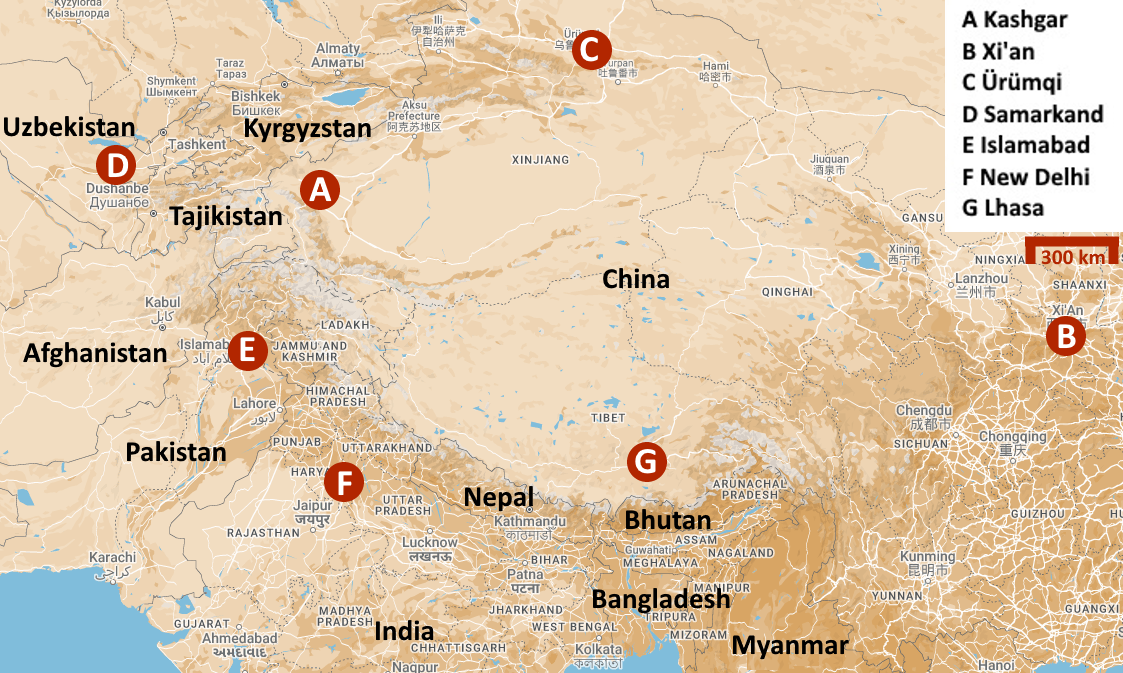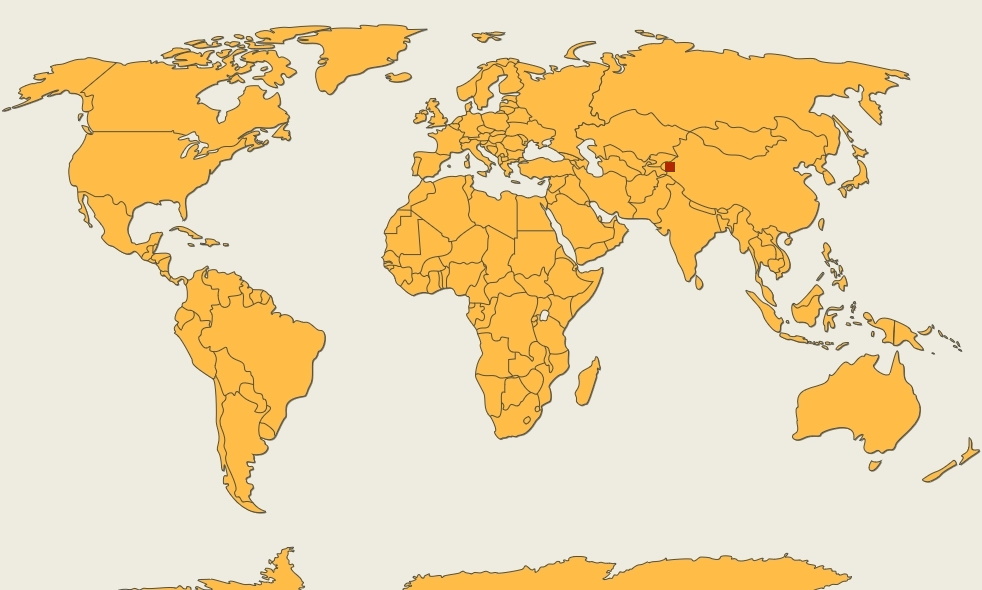China's least Chinese city
China | Kashgar | Anno 1998 (*)


A huge almond-shaped spot, almost half the size of France, colours Central Asia. It is the Taklamakan Desert, a formidable sandy desert. Three imposing mountain ranges, each more than seven thousand metres high, hold her like a horseshoe – the Tian Shan, the Pamir Mountains and the Kunlun Mountains
Yet here and there on the edge of that desert enough water collects from the mountains to make permanent habitation possible. Thus arose fertile oases that gird the arid desert like a string of green pearls. Commercial caravans wishing to traverse this area use these oases as staging points on their journey.
Far to the west, where the Taklamakan Desert meets the Pamir Mountains, is the largest of these oases. Kashgar is its name. From here you can cross the mountains – to the Indian subcontinent in the south or to the Mediterranean in het west. Its unique position makes Kashgar a crossroads of cultures and a hub between East and West. That was already the case before the beginning of our era and that is still the case.
The Chinese capital Beijing is a long way to the east. It took a caravan more than a hundred days. Yet the Chinese have claimed sovereignty over this area for two thousand years. For a long time this was a theoretical concept, because the Chinese hold on the western province of Xinjiang was not very firm. It was not until 1755 that Emperor Qianlong began to work on an effective occupation. Yet even in 1933 the Uyghurs managed to declare the independent republic of East Turkestan for a while. After 1949, Mao Zedong put an end to the rebellion for good. The Uyghurs were increasingly oppressed and faced the cultural revolution, the red guard, forced labour and re-education camps.
The Uyghurs never formed a real nation, unlike other Turkic peoples such as the Kyrgyz, Uzbeks and Turkmen. But the vitality of their culture is no less than that of their sister peoples. In the dusty alleys of old Kashgar, with its mud-brick houses, wooden balconies, carved doors, bustling street trade and variety of clothing, you would rather imagine yourself in old Persia, Afghanistan or Tajikistan than in China. The fact that The Kite Runner, a film set in the Afghan capital Kabul, will be shot in Kashgar, is a striking illustration of this.
Currently (1998) Kashgar has about 310,000 inhabitants. Nearly one in five is Han Chinese, lured here by attractive employment and housing conditions. The undisguised intention is to reduce the Uyghur population – just like the Tibetan population – to a minority in their own region. At the end of next year (1999) that policy will gain momentum. Because then Kashgar will be connected to the Chinese railway network via the Southern Xinjiang Railway. More and more Han Chinese will arrive. By 2015, they will make up half of the local population and impose their culture.
Of all the cities in China, Kashgar is the least Chinese, concluded British travel writer Colin Thubron. That won't last long, however.
Jaak Palmans
© 2022 | Version 2022-08-17 16:00
(*) Some photos date from 1992. These are marked with an *.


